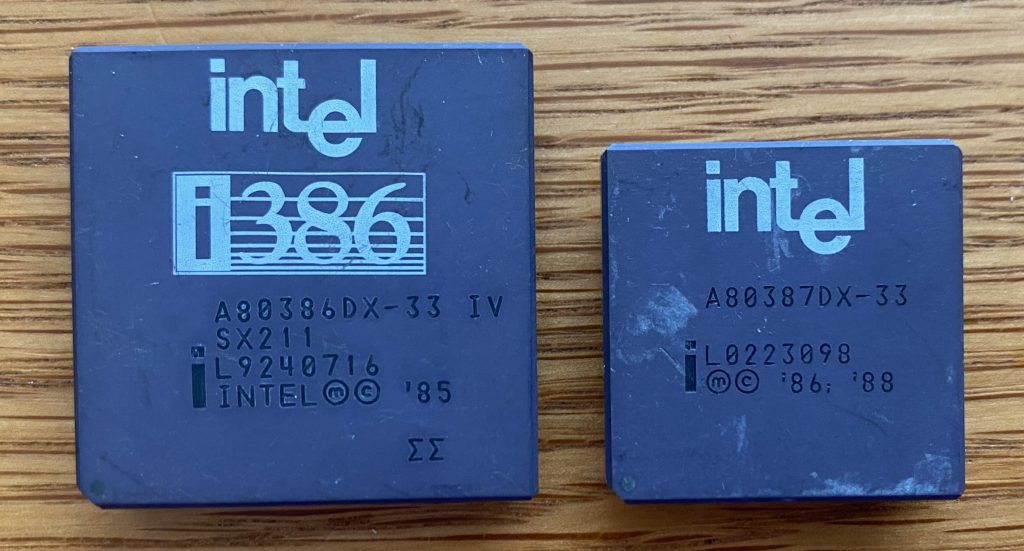
By Sgroey – Own work, CC BY-SA 4.0, https://commons.wikimedia.org/w/index.php?curid=158840808
On a rainy evening in Santa Clara, sticky notes covered the glass walls of a conference room.
“The issue isn’t speed or performance. It’s trust,” said a product manager.
The architect sitting next to him smiled. “And trust comes from manufacturing.”
That single word—trust—summarizes Intel’s 50-year journey: how it became the standard, how it stumbled, and how it now seeks redemption.
From Memory Chips to Microprocessors
In 1968, Robert Noyce and Gordon Moore founded Intel, with Andy Grove leaving the lab bench to join the production line. Starting as a memory company, Intel launched the world’s first commercial microprocessor, the 4004, in 1971, and later the 8086 in 1978, reshaping the foundation of computing. What was once a joke in the lab—“One day the same program will run on any computer”—became reality.
IBM PC and the Rise of x86
The turning point came in 1981, under the lights of the Waldorf Astoria in New York, when IBM chose Intel’s 8088 for its PC. Cheaper than the 8086 due to its 8-bit bus, the 8088 created the “IBM PC compatible” wave. At the heart of this new standard was x86, which transformed not just computers, but the entire industry ecosystem.
The Pentium FDIV Scandal
But being the standard had risks. In 1994, headlines exploded with the Pentium FDIV bug, a floating-point division flaw. Initially dismissed as statistically insignificant, Intel was forced into a full recall—costing $475 million. Trust had been shaken. As one engineer wrote: “If a computer cannot calculate correctly, everything collapses.”
The Itanium Misstep
In the late 1990s, Intel tried to rewrite the rules with IA-64 Itanium, a bold VLIW-based architecture developed with HP. But the market chose AMD’s x86-64 instead. Itanium faded into obscurity, remembered as a costly lesson in ignoring ecosystem inertia.
Centrino and the Mobile Era
In 2003, Intel found success again with Centrino, bundling CPU, chipset, and Wi-Fi into one platform. With its promise of “thin, light, connected everywhere,” it turned airports and coffee shops into mobile offices and helped mainstream Wi-Fi adoption.
Setbacks in Trust and Manufacturing
Intel’s history is also marked by manufacturing stumbles.
- 2011 Sandy Bridge Cougar Point bug: A SATA flaw forced a billion-dollar recall, though Intel reacted quickly.
- 2015–2019: The once-reliable “tick-tock” cadence collapsed, 10nm was delayed, and 14nm stretched endlessly, while competitors surged ahead with 7nm.
Trust, once Intel’s strongest asset, began to waver.
AMD’s Comeback
By 2020, AMD’s Ryzen 5000 (Zen 3) reversed the narrative. IPC gains of ~19% put Intel’s Rocket Lake on the defensive. In gaming, Ryzen X3D chips (5800X3D, 7800X3D, 9800X3D) created the market perception: “Cache equals frames.”
Meanwhile in servers, AMD’s EPYC Genoa and Bergamo pushed density and efficiency with TSMC’s foundry advantage. By 2025, AMD had ~27% server unit share and ~41% server revenue share—unthinkable just years earlier.
Intel responded with Alder Lake hybrid CPUs and Xeon 6 (Sierra Forest & Granite Rapids), regaining ground in single-thread and scaling performance. But instability issues in Raptor Lake desktop CPUs and repeated delays in fabs (e.g., Ohio site now 2030+) kept skepticism alive.
Today’s Crossroads
Intel’s CTO summarized it in a meeting:
- Timing: Lost momentum with 10nm delays, filled by AMD’s Zen 3.
- Gaming Narrative: Missed the “cache = FPS” wave.
- Server Efficiency: Fell behind in performance-per-watt and core density.
- Trust: Recurring recalls, instability, and fab delays eroded confidence.
Yet hope remains. Meteor Lake introduced NPU-based AI acceleration, Arrow Lake improved efficiency, and Intel is betting on 18A process nodes and advanced packaging (Foveros, EMIB) to regain leadership.
On a hallway poster, a note captures Intel’s new mission:
“What we sell isn’t MHz or core counts—it’s the promise that tomorrow, performance will be the same.”
Intel’s future depends not just on performance, but on restoring that promise.

By Intel – https://www.intel.com/content/www/us/en/newsroom/resources/press-kits-intel-overview.html, Public Domain, https://commons.wikimedia.org/w/index.php?curid=128439024
